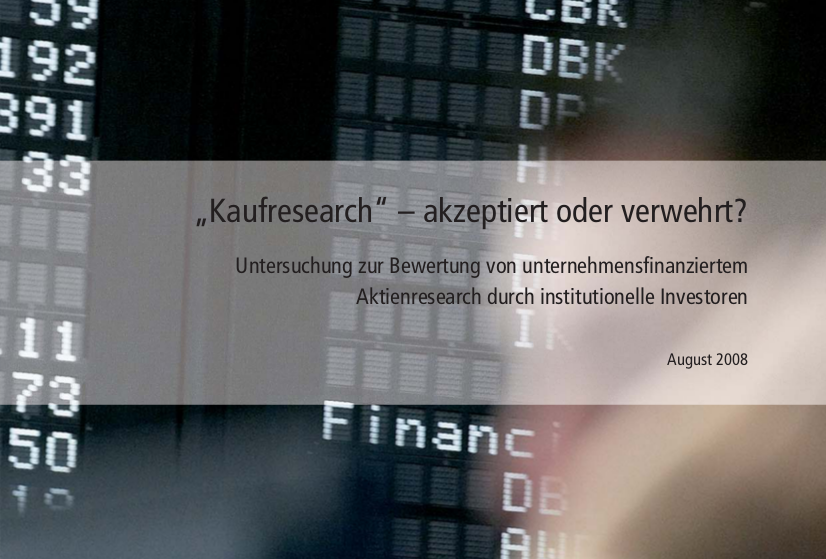Company-financed equity research (“buy-side research”) is controversial among institutional investors, primarily because of the frequently assumed conflicts of interest of the research firms. This is the result of a survey conducted by communications consultancy IR.on AG among 40 institutional investors from Germany, Austria and Switzerland.
Share Article
Cologne, 13 August 2008 – The survey was targeted not only at specialised small and micro cap investors but also at buy-side analysts as well as portfolio managers of large investment companies in charge of German small and micro caps. The responding institutions manage total assets in excess of EUR 920 billion.
Given that listed companies are covered by sell-side analysts only if they have a certain size, smaller companies (market capitalisation below EUR 100 million) are often forced to commission a non-bank research provider to increase their visibility in the capital market – against a fee. In spite of the alleged conflict of interest, 85% of the investors surveyed generally consider buy-side research to be recommendable, as it allows the companies in question to show up on the capital market’s radar in the first place.

About half of the investors surveyed have access to internal buy-side research and therefore use externally produced analyses only as a complementary source of information. As many as 47% of the small-cap investors occasionally use buy-side research from independent research firms to evaluate a stock, 13% of them do so even more frequently. According to the participating investors, potential solutions to improve the credibility of buy-side research include increased contractual transparency, comprehensible analysis models as well as the publication of the rating history and the rating universe of the buy-side research providers.
The investors rated the eleven prompted German research firms as “satisfactory”
On the other side, the ratings (upside targets) and the underlying valuations in the studies play only a minor role for the investment professionals. For most of the investors who use buy-side research, these analyses merely provide a “first impression” of a company and primarily serve as a source of information about its market environment, the industry and the business model. Achim Josten, Board member of IR.on AG: “The results of the study suggest that the function of buy-side research should be redefined. While it is widely accepted, its actual function as a valuation tool remains unused. To make sure that investors listen to them also at that level, the research firms should certainly ensure greater transparency.”
When asked about the minimum number of analysts covering a small/micro-cap company, the majority of the investors surveyed wanted at least two different research providers. But 37% of the respondents said they were able to make their investment decision also without external research.
On balance, the responding investors rated the eleven prompted German research firms as “satisfactory” (ø 2.81).
According to institutional investors, small and micro caps have many possibilities to increase their visibility in the capital market, including “more roadshows”, regular participation in capital market conferences as well as detailed reporting.